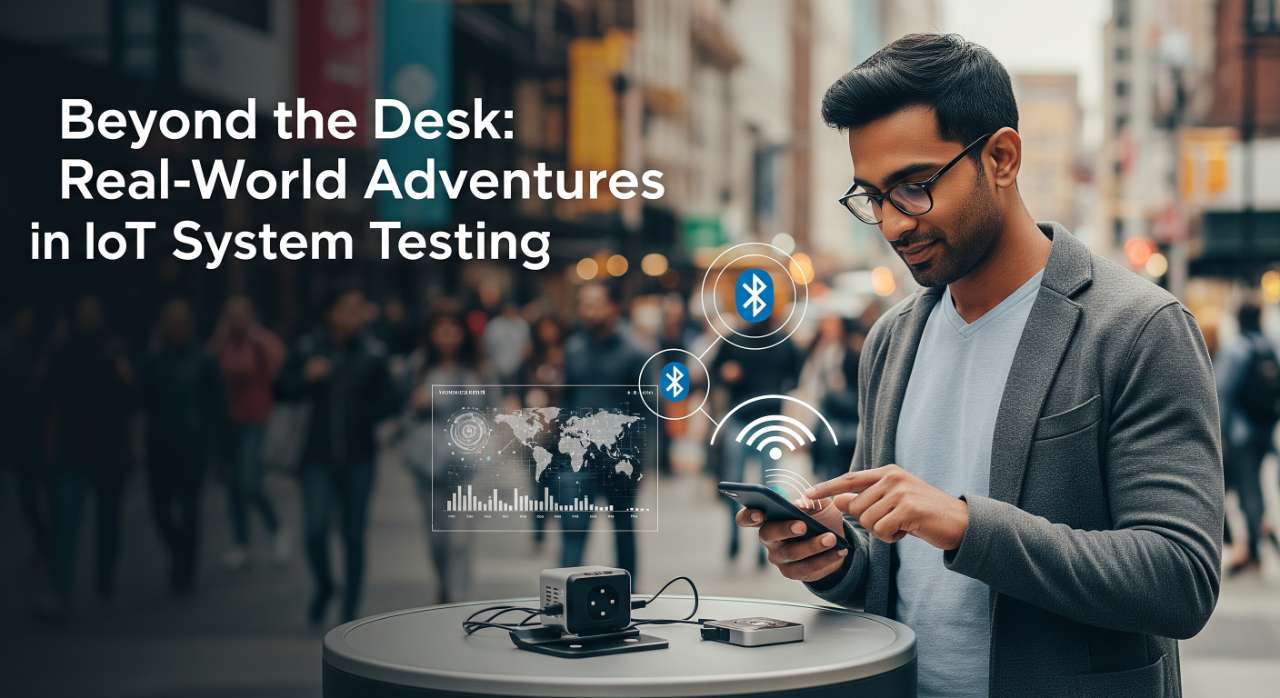 OTHERS
OTHERS Beyond the Desk: Real-World Adventures in IoT System Testing

When most people think of software testing, they picture someone sitting at a desk, quietly clicking through test cases on a computer. But for those working with IoT systems, testing often goes far beyond that into the unpredictable, fast-paced environment of the real world.
What is an IoT system?
An IoT (Internet of Things) system consists of interconnected devices that can collect, exchange, and act on data through the internet. These systems typically include sensors, embedded firmware, communication modules (like Bluetooth or WiFi), and software platforms such as mobile or web apps.
IoT projects often involve a mobile app communicating with physical hardware via Bluetooth or WiFi, such as devices that collect and send data from external systems. These products rely on the seamless interaction between software, firmware, and hardware.
What is firmware?
Firmware is low-level software programmed into hardware devices that controls their functions and interactions. It acts as the bridge between hardware and higher-level software, enabling devices to process inputs, run commands, and communicate with other systems.
And the only way to truly validate that? Test it where the users actually use it in the field.
What Is IoT System Testing in the Real World?
It’s not just about checking whether buttons work or screens look good. IoT system testing in real-world conditions involves:
- Ensuring the app and hardware connect and communicate reliably
- Validating how the firmware responds to real data inputs
- Testing the system’s behavior in varying environments traffic, signal drops, weather, movement, and more
But most importantly, Testing like real users.
It’s not just standing next to the device in a lab; it’s going into the field and simulating real usage scenarios. Whether walking through a city, sitting in a vehicle, or testing connectivity on the move, the goal is to mirror the exact environment where end-users rely on the system.
This approach uncovers issues invisible during lab testing, problems that only appear in dynamic, real-world situations.
Why Field Testing Matters?
The lab gives you control. The field gives you truth.
In real-world conditions, challenges reflect what users actually experience:
- Unstable Connectivity: Weak Bluetooth or network signals
- Environmental Factors: Rain, heat, poor lighting, or physical movement
- Unexpected Situations: Noise, delays, blocked roads, or user errors
These are not just obstacles; they are critical test inputs. By exposing systems to them, it’s ensured they hold up in real-life use, not just ideal scenarios.
The Real Goal: Testing in Real Conditions
The goal isn’t just verifying that the system works; it’s proving it works in the conditions that actually matter.
Through field testing:
- Ensure reliability and performance in live environments
- Catch real-world bugs that never show up in simulations
- Build empathy for users by understanding their challenges firsthand
- Improve products based on practical, usage-based data
Whether collecting logs on busy roads, troubleshooting during a rainstorm, or resolving pairing issues in low-signal areas, this kind of testing pushes teams to understand the system from every angle.
Final Thoughts:
Testing doesn’t always mean sitting in front of a screen. Sometimes it means walking in your user’s shoes literally, to ensure the product delivers on its promise, no matter where or how it’s used.
Have you worked on field testing before? Faced unexpected challenges while validating IoT systems or apps in the real world?